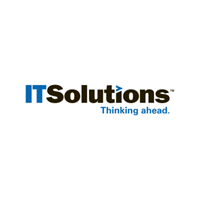
Make no mistake: telehealth technology is on the rise. The number of telehealth services — from video visits and phone calls to remote patient monitoring and mobile health apps — has grown by as much as 15x since the onset of the COVID-19 Pandemic, with the market expected to reach $240 billion by 2032.
The benefits of telehealth technology are abundant, including greater efficiency, broader access to primary care, and increased patient satisfaction. However, the challenges of implementing effective telehealth services are worth noting, especially from an IT perspective.
Due to the pandemic, many healthcare organizations needed to quickly adopt telehealth services at scale without the time to create a definitive, long-term IT strategy. Consequently, they later discovered that their chosen systems or processes hindered their capacity to fulfill patient expectations and adjust to evolving compliance and security regulations. For instance, some healthcare providers are now discovering that they lack the necessary security measures to protect their patients’ health records. Others have invested significant resources into incompatible or poorly integrated telehealth technology, leading to limited interoperability, failure to maintain compliance, and higher costs.
In this article, we’ll break down some of the trends driving the implementation of telehealth technology and offer best practices for supporting telehealth services through the consolidation of IT systems.
5 Factors Driving the Next Generation of Telehealth Technology
As telehealth technology becomes more prevalent across the healthcare industry, a number of factors are contributing to the development of fast, secure, and cost-effective telehealth services at scale.

Increased demand for virtual visits. The COVID-19 Pandemic significantly increased demand for telehealth services, with patients growing accustomed to virtual visits. This trend is particularly noteworthy for patients who are immunocompromised, as virtual visits are a safe and convenient way to receive routine medical care.

Remote patient monitoring. Wearable devices and remote patient monitoring technologies enable healthcare professionals to track their patients’ health remotely and in real time. Some more common wearables include blood pressure monitors, blood glucose meters, heart rate monitors, pacemakers, spirometers, and other remote patient monitoring devices.

Changes in reimbursement policies. Insurance companies and Medicare are covering more telehealth services, which are often more cost-effective than in-person visits, making it easier for healthcare professionals to offer virtual appointments to their patients.

More focus on patient-centered care. Telehealth technology through a secure patient portal enables healthcare providers to make primary care a more personalized experience. Providers can easily communicate with patients, access health records on demand, monitor patients’ progress, provide ongoing management of chronic conditions, and adjust treatment plans in real time.

Growing acceptance. As telehealth visits become increasingly mainstream, patients and healthcare professionals have become accustomed to using these technologies to deliver and receive care. The rapid and necessary adoption has made virtual healthcare a staple for many patients and providers.
Fragmented Data Hinders the Optimization of Telehealth Technology
Data fragmentation can hinder the implementation and optimization of telehealth services by making it difficult to provide high-quality care as efficiently and securely as possible. In many cases, patient health records are scattered across a broad range of systems and platforms. The lack of streamlined access to patient data reduces efficiency and, ultimately, affects patient outcomes.
And perhaps most importantly, data fragmentation can introduce major compliance and security risks by increasing the frequency and severity of data breaches and HIPAA violations, as data may reside across multiple systems with varying levels of security and access controls.
Consequently, it should come as no surprise that consolidating IT systems is one of the top factors driving purchasing decisions in healthcare today. By consolidating IT systems, healthcare organizations can support many types of telehealth initiatives, as they can more easily share health records across a broad range of systems and platforms. This helps ensure that patients receive the highest-quality care, regardless of where they’re located or which healthcare professionals are treating them.
Other benefits include:
- Reducing your administrative and operational costs.
- Improving communication and coordination.
- Simplifying IT vendor management.
- Increasing your purchasing power.

How to Make Telehealth Technology Scalable and Cost-Effective
Cloud-based functionality is critical for telehealth technology to be deployed at scale. A HIPAA-compliant, cloud-based platform enables secure, real-time access to health records, ensuring confidentiality by preventing private data from being disclosed without the patient’s express permission.
When considering which cloud-based telehealth platform is right for your organization, consider the following factors:
- Infrastructure: Your technology must be designed to accommodate large volumes of providers, patients, and health records. In other words, your storage capacity, network bandwidth, and processing power need to handle a major increase in usage without impacting the quality of patient care.
- Compliance: Telehealth services must be secure enough to prevent data breaches. This includes implementing strong protocols for encryption and authentication, ensuring secure storage and transmission of health records for full compliance with all relevant regulations.
- Integration: Your technology must be able to integrate with a broad range of healthcare solutions for complete interoperability.
- Accessibility and Support: Telehealth technology must remain accessible to everyone, regardless of their ability. This includes creating an intuitive user experience and providing on-demand support for patients who may require assistance.
Looking for an MSP Partner to Help You Deploy and Manage Telehealth Technology Initiatives?
Not all MSPs are created equal. Moreover, many all-industry or generalist MSPs simply won’t understand the unique demands of HIPAA compliance. Find a partner that has deep experience working with healthcare organizations like yours. In other words, a partner that already speaks the language and knows all the requirements associated with regulations like HIPAA, HITECH, ACA, and others.
IT Solutions, an MSP partner offering a wide range of managed IT services, has over 25 years of experience focusing on major telehealth technology initiatives and currently supports 60+ leading healthcare organizations. To learn more, visit our Healthcare Services Page.
IT Solutions Consulting
-
Chris Miller Marketing Manager
- September 25, 2023
- (215) 886-7166 x1174
- Send Email


